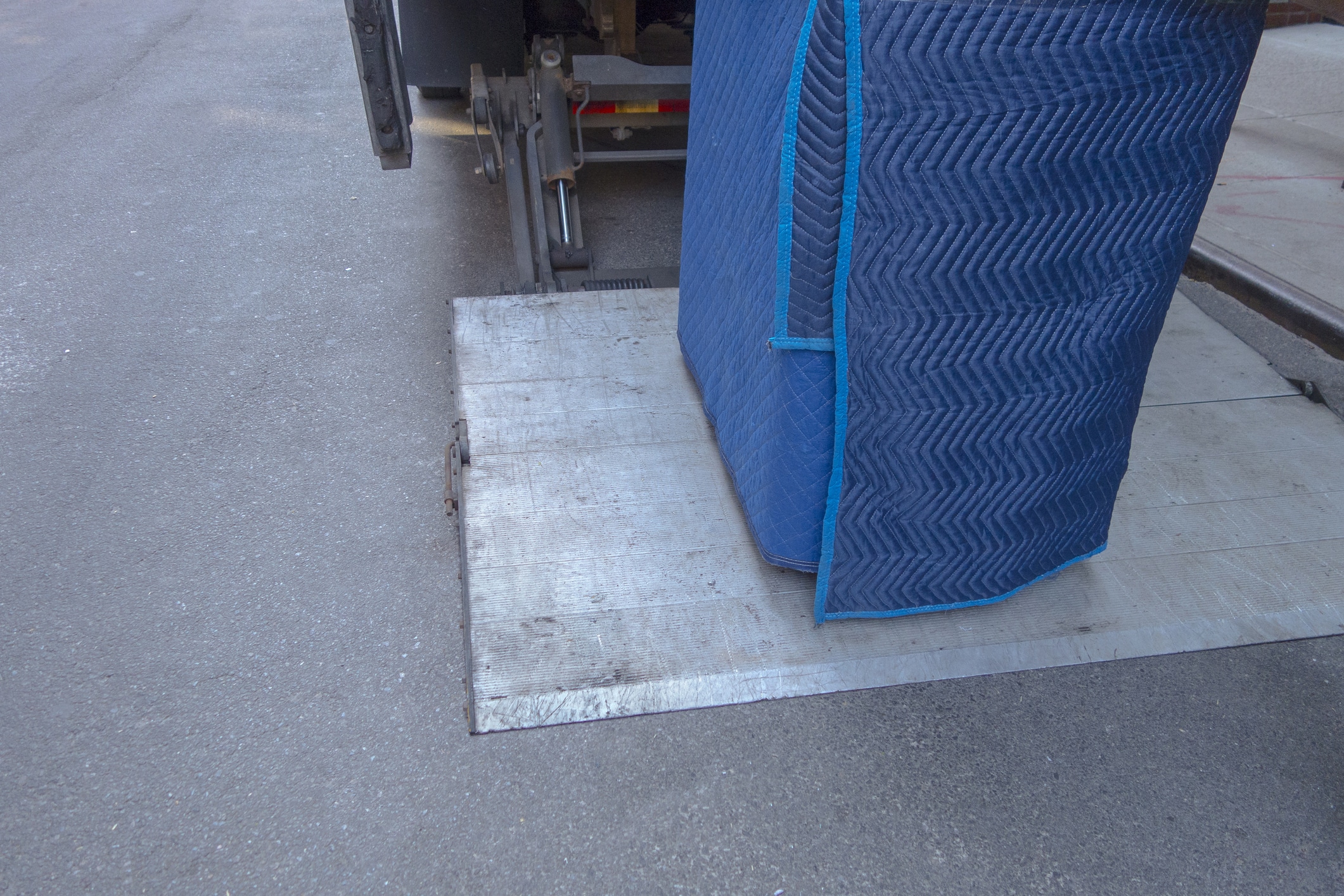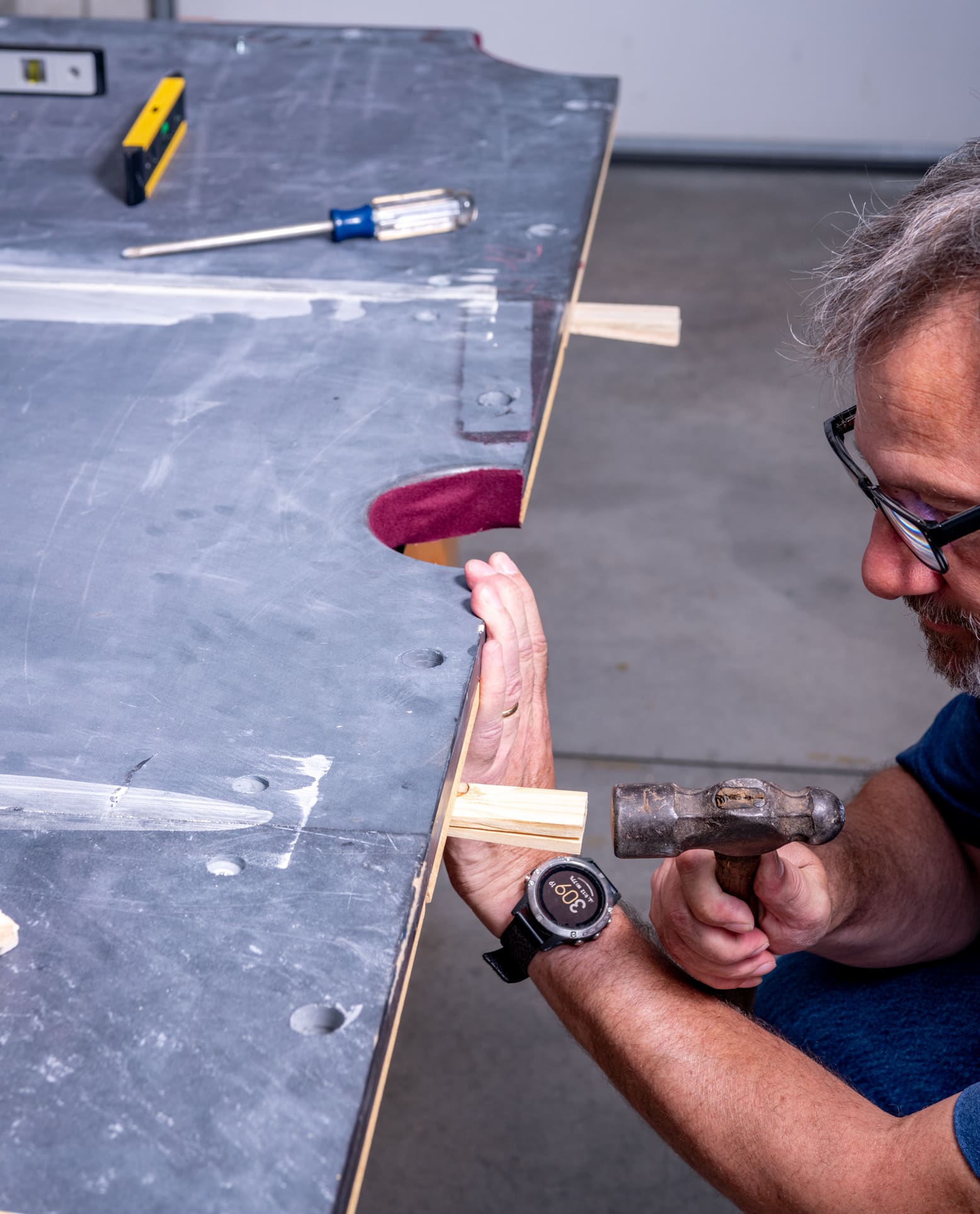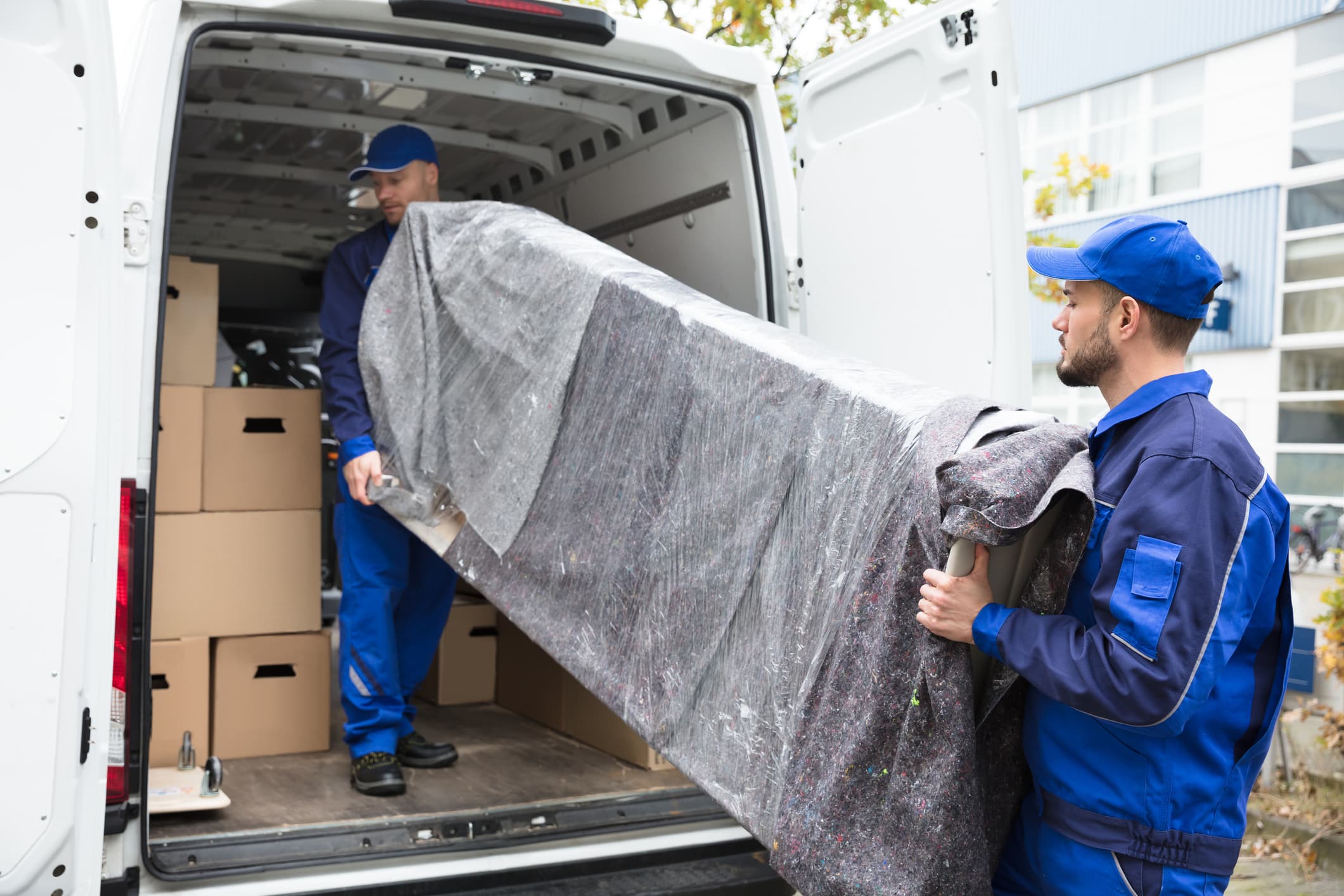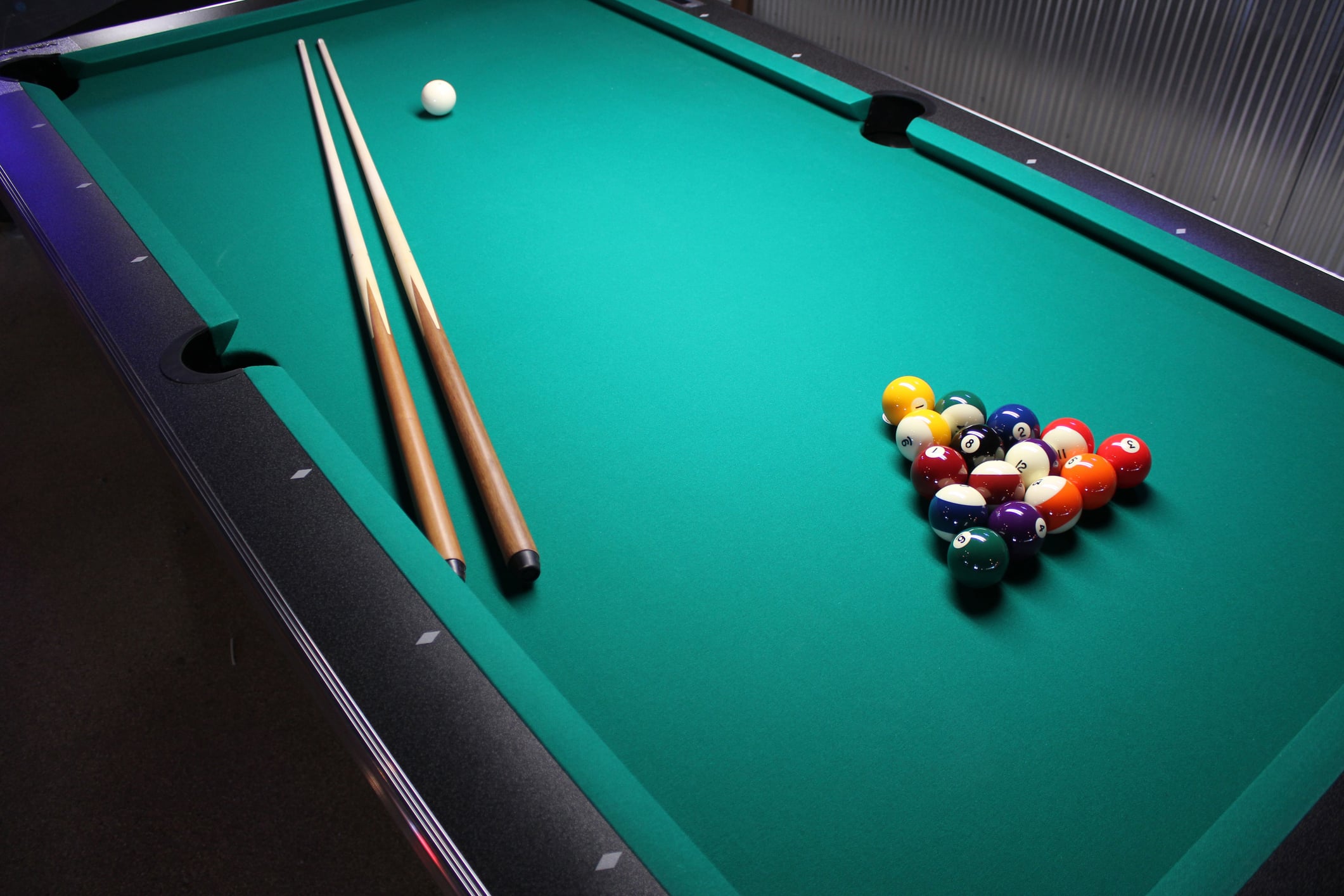(Updated September 27, 2024)
According to a 2024 survey, 83 percent of those who recently moved viewed the process as stressful. And the main culprit for all that stress? Bulky furniture.
As you consider which of your beloved bulky possessions will be the toughest to move, your pool table is likely at the top of your list. Where do you even begin when thinking about how to move a pool table? It’s hard enough to transport items like a couch or dresser — but moving a pool table (all 1,000 pounds of it) is next level.
So, what’s the least stressful and most effective way to move a pool table long distance? Read on for our expert, step-by-step guide.
How to Move a Pool Table Like a Pro
First of all: Should you hire a professional service to move a pool table, or can you manage it alone? The short answer is, you might not need a professional for the heavy lifting. That is, if you’re strong and have some friends with a similar build and a willingness to help, plus an accessible heavy-duty truck. Also, you’ll need some extra time on your hands to get it all done (assuming you’re not already juggling a million other things).
Remember that survey we mentioned earlier? 54 percent of those who found moving stressful chose not to use a professional. To avoid that fate, a long-distance moving service is worth looking into. But if you want to give it a go solo, here’s how to move a pool table on your own.
Necessary Tools for Moving a Pool Table
- 4–5 strong helpers (to disassemble and lift onto the truck)
- Screwdriver or power drill (to remove screws from the pockets, rails, and frame)
- Staple remover (to take off the felt surface)
- Socket wrench (to remove nuts and bolts from the legs and frame)
- Slate lifter (if your pool table is made of slate)
- Labels and marker (to keep everything organized)
- Packing and moving materials (to cushion each piece during transport)
- Moving blankets
- Foam padding
- Lifting straps
- Packing tape
- Plastic moving wrap
- Cardboard (to protect the corners)
- Dollies (to move large sections, like the frame)
- Tie-down straps (to secure in the truck)

What To Do Before You Move a Pool Table
Set down your cue and pay attention to these tips on how to move a pool table:
- Rent a moving truck: Pool tables can quite literally weigh a ton (the dimensions of an average 8-foot home pool table clock in around 88 inches x 44 inches). So, invest in transportation that can handle this level of bulk, plus all the other furnishings you’ll be hauling long distance.
- Run some calculations: Measure the doors, stairs, hallways, and other access points you’ll need to clear when moving your pool table to the truck. It might seem easier just to eyeball those spaces, but take our but take our word for it — determining the exact measurements will help you maneuver the pool table through your home.
Protect Your Home’s Interior While Moving a Pool Table
|
How To Disassemble a Pool Table
As you consider the best way to move a pool table, consider: You’ll have to not only take it apart and secure each individual piece, but you’ll also have to figure out how to reassemble everything when you get to your new home. If this seems too daunting, skip the effort and hire a professional service to handle all those logistics. But for anyone who wants to forge ahead, we’ve got you covered with step-by-step instructions below.
1. Remove the pockets and rails
Use a screwdriver or staple remover to detach the ball pockets from the table. Loosen the nuts and bolts on each side rail with a wrench. Have individual bags ready to store the nuts, bolts, and screws.
2. Take apart the surface and slates
Use a staple remover to gently extract the felt surface from the table frame, so it comes off in one piece. Be sure to pack it immediately after extraction, as the felt material is delicate. Use a power drill to remove the side slates. Each slate can weigh as much as 450 pounds, so you’ll need assistance to lower the risk of getting hurt.
3. Detach all four legs from the frame
Turn the pool table frame over on its back, and use a screwdriver or power drill to remove the legs. Use a power drill to take the remaining frame apart into smaller, manageable pieces.
4. Keep all the components organized
As you disassemble each piece, note the order in which it was taken apart (photos can help here), so you can later reassemble the pool table in reverse order. You’ll also want to label everything in detail (what it is, where it goes, etc.) and store all the parts and fasteners separately.

How to Pack and Load a Pool Table for Moving
Now that you’re through with disassembly, let’s cut to the chase: How to move a pool table. When transporting an item this heavy for a long distance, it’s crucial to securely pack individual components in durable boxes whenever possible.
Follow these other pointers for a smooth, damage-free move:
1. Pack the slates
Clean the slate to ensure it’s free of debris to prevent any scratches. Wrap each piece in moving blankets to keep them protected in transit. Use packing tape to firmly secure the blankets, then place cardboard on each corner, so the slate edges won’t chip.
2. Pack the rails
Wrap the rails in foam padding to ensure the wood panels and finish won’t scratch. If you can, also pack them in a long, sturdy box for another layer of protection.
3. Pack the legs
Wrap each leg separately in a moving blanket, and use extra foam pads if the legs have any fragile details or sharp edges. For extra protection, place each leg in a box.
4. Pack the frame
Wrap each section of the frame (beams, sides, base, etc.) in moving blankets. If the frame has delicate pieces or finishes, use a foam pad for extra cushioning.
5. Pack the pockets
Wrap the table pockets in foam padding to ensure the leather or plastic material won’t scratch and crack. Find a small, compact box for all six pockets, then fill in any extra space with more foam to prevent them from shifting around.
6. Pack the felt
Roll the felt surface carefully to avoid stretches or tears. Do not fold the material, as this can result in permanent creases.
7. Pack the fasteners
For the bags of small hardware, be sure they’re carefully labeled with what section of the pool table they belong to. Store them in a durable container or tool box, so you won’t lose any fasteners in transit.
8. Pack the accessories
Wrap the cues, balls, rack, cue holder, cushions, or other accessories in foam padding, secured with packing tape.
9. Load the boxes for transport
Ensure the boxes with the heaviest, most fragile pieces (the slates, for instance) are wedged firmly in the truck with no room to jostle around.
10. Drive carefully
Finally, drive with caution — if you break or shift gears too abruptly, delicate items in the truck might do the same

How To Set Up a Pool Table in Your New Home
We’ve talked about how to move a pool table for your long distance move. Now, how do you put it all back together once you reach the final destination?
Fortunately, those meticulous notes you took while disassembling the pool table should help — but here’s a quick rundown to help you out.
1. Assemble the frame and legs
Lay out all the frame pieces where you want the pool table to stand. Use a socket wrench to secure the nuts, bolts, and screws for each frame component, then reattach the legs with a socket wrench, ensuring they don’t wobble. Test the frame to make sure it’s stable and square before reassembling any other parts of the pool table.
2. Install and level the slates
Position the slates on top of the frame, then make sure they’re aligned with no seams or spaces in between. Use a socket wrench to bolt the slate holes to the frame, and place a level on the slate in various directions to ensure an even playing surface.
Pro tip: If you notice a seam between the slates, you can use beeswax to fill in this gap, then smooth it out with a putty knife and scrape off any excess residue once the beeswax dries.
3. Attach the felt surface
Spread the felt over the slate, so it covers the whole surface area. Smooth it out to remove any wrinkles or creases, stretch the felt tightly, and attach it beneath each of the slate edges with a staple gun. Trim any excess felt along the sides with cloth scissors.
4. Install the rails and pockets
Use a screwdriver to reattach the pockets to the frame. Make sure they’re fastened securely enough to handle the impact from balls. Align the rails with both the slates and the frame, then use a socket wrench to bolt the rails and tighten them. Place each cushion on its corresponding rail to ensure the balls can properly bounce during play.
5. Make final adjustments
Conduct one more level check to ensure the legs, surface, and frame are in alignment. Roll a ball across the pool table to see whether it rolls evenly. (If you scratch a cue ball, you want to know it’s your mistake, and not because of a misassembled pool table.) If the ball starts to veer off-course, your table is not quite level — and you may need to make some shims to fix the issue.

Moving a Pool Table Yourself vs. Hiring a Pool Table Mover
As you consider how to move a pool table to your new home across state lines, going the DIY route is always an option. But considering both the effort and risk of damage or injury, it’s no wonder many homeowners either sell their pool table or hire a professional to move it for them.
Professional movers handle all the logistics, so you won’t need to stress — or give up your pool table. As for cost, most moving companies charge extra for large items like pool tables due to their complexity or weight, but their specialized care will minimize the risk of damaging your pool table, which could be valued anywhere from $1,200 to $3,500 or more.
Ready To Hit the Road for Your Long-Distance Move?
If you have a long-distance move on the horizon — with or without a pool table in tow — let our team at Colonial Van Lines handle all the logistics. With our full-service moving solution, all the furniture disassembly, transport, and reassembly is included with every move and you can relax knowing that all your valuables are in our experienced hands. Contact us for a free quote today!

